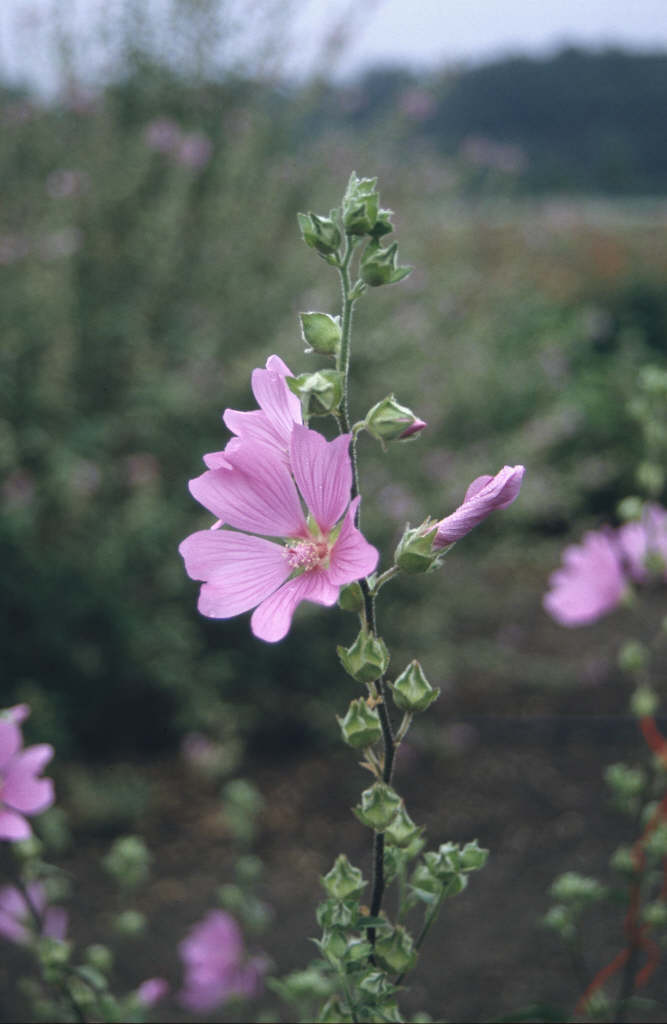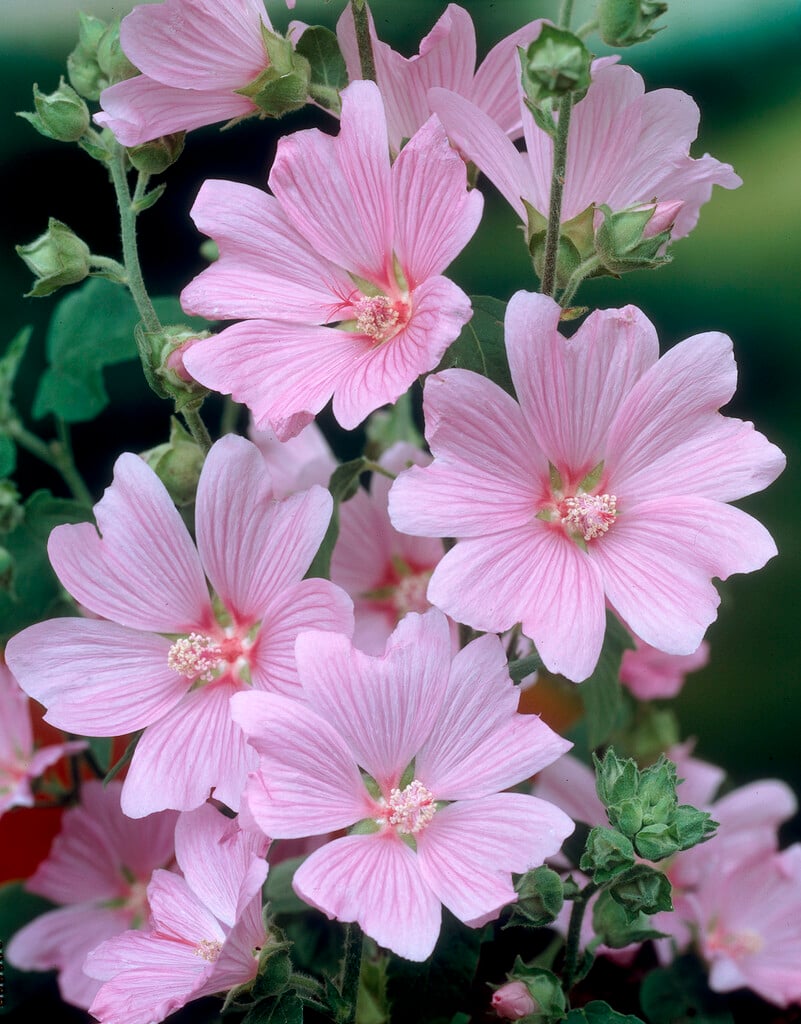Lavatera olbia 'Rosea'
tree mallow 'Rosea'
'Rosea' is a vigorous medium-sized, semi-evergreen, often short-lived subshrub with hairy, greyish stems and leaves. Flowers to 8cm in width, light pink
Synonyms
Malva arborea 'Rosea'Lavatera olbia 'Rosea'
see moreLavatera thuringiaca 'Rosea'
Lavatera arborea 'Rosea'
Lavatera × clementii 'Rosea'
Lavatera 'Rosea'
Size
Ultimate height
1.5–2.5 metresTime to ultimate height
2–5 yearsUltimate spread
1.5–2.5 metresGrowing conditions
Moisture
Well–drainedpH
Acid, Alkaline, NeutralColour & scent
| Stem | Flower | Foliage | Fruit | |
| Spring | Green Grey Silver | |||
|---|---|---|---|---|
| Summer | Pink | Green Grey Silver | ||
| Autumn | Green Grey Silver | |||
| Winter | Green Grey Silver |
Position
- Full sun
Aspect
South–facing or East–facing
Exposure
Exposed or Sheltered Hardiness
H5Botanical details
- Family
- Malvaceae
- Native to GB / Ireland
- No
- Foliage
- Semi evergreen
- Habit
- Bushy
- Genus
Malva can be annuals, biennials or perennials, with rounded, often palmately lobed leaves and 5-petalled, open funnel-shaped flowers in the leaf axils or in terminal racemes
- Name status
Accepted
How to grow
Cultivation
Grow in light, moderately fertile, well-drained soil in full sun. Shelter from cold, drying winds in frost-prone areas. Often short-lived
Propagation
Propagate by taking softwood cuttings in spring
Suggested planting locations and garden types
- City and courtyard gardens
- Coastal
- Cottage and informal garden
- Mediterranean climate plants
- Low Maintenance
- Flower borders and beds
- Wall side borders
Pruning
Cut down growth in autumn
Pests
Generally pest-free
Diseases
May be subject to stem rot, soil-borne fungal diseases and a rust
Love gardening
Sign up to receive regular gardening tips, inspiration, offers and more
View our Privacy Policy
Get involved
The Royal Horticultural Society is the UK’s leading gardening charity. We aim to enrich everyone’s life through plants, and make the UK a greener and more beautiful place.

